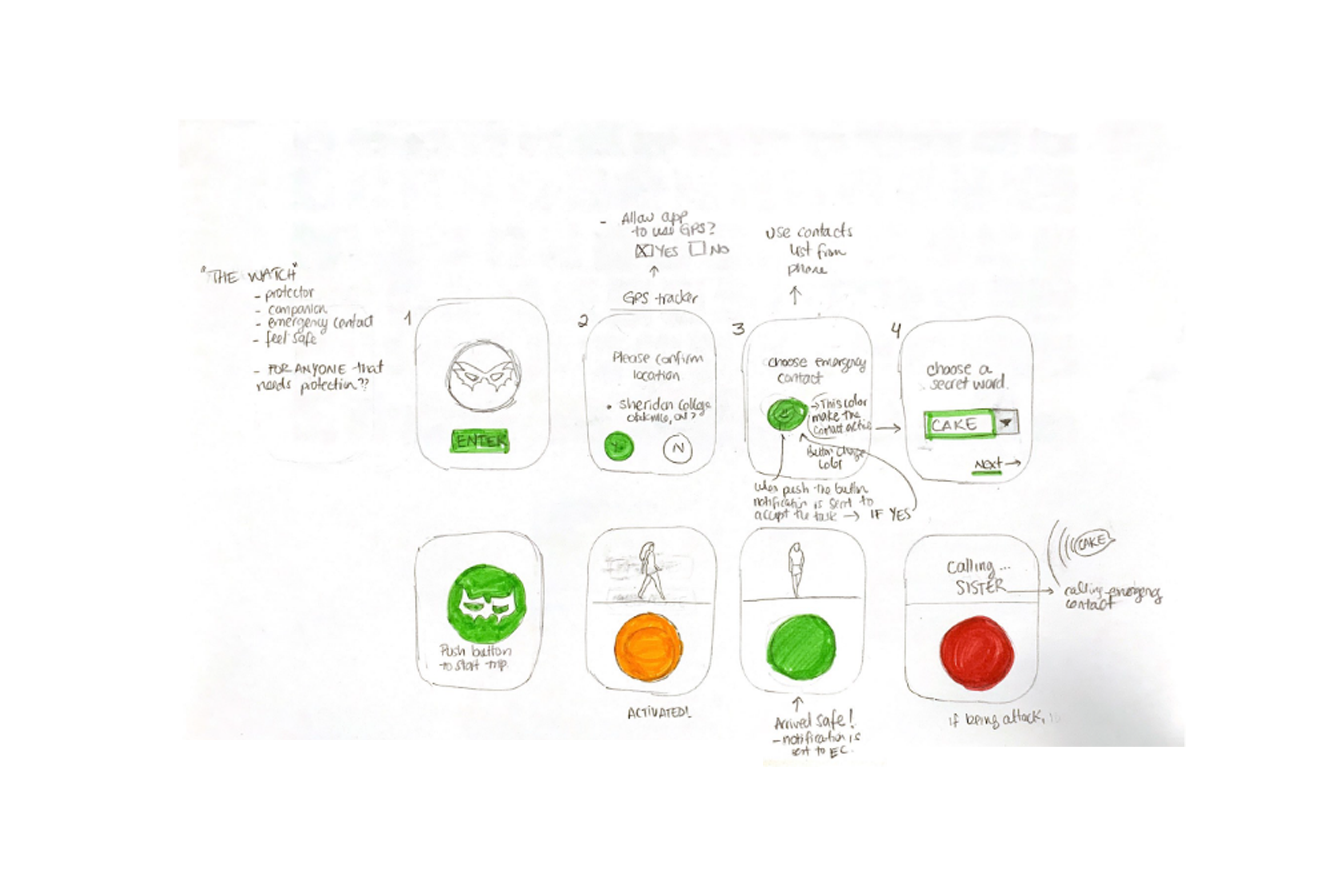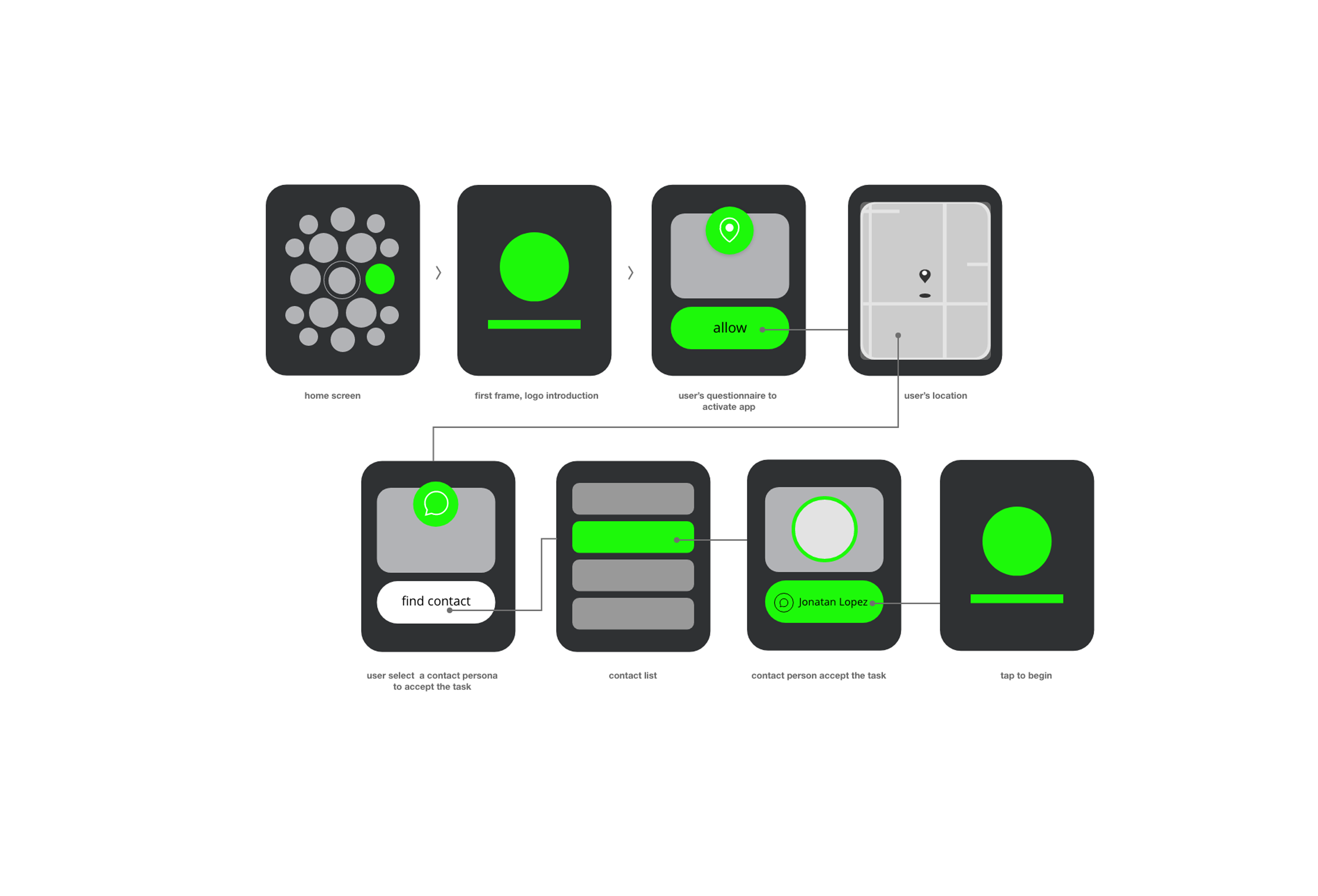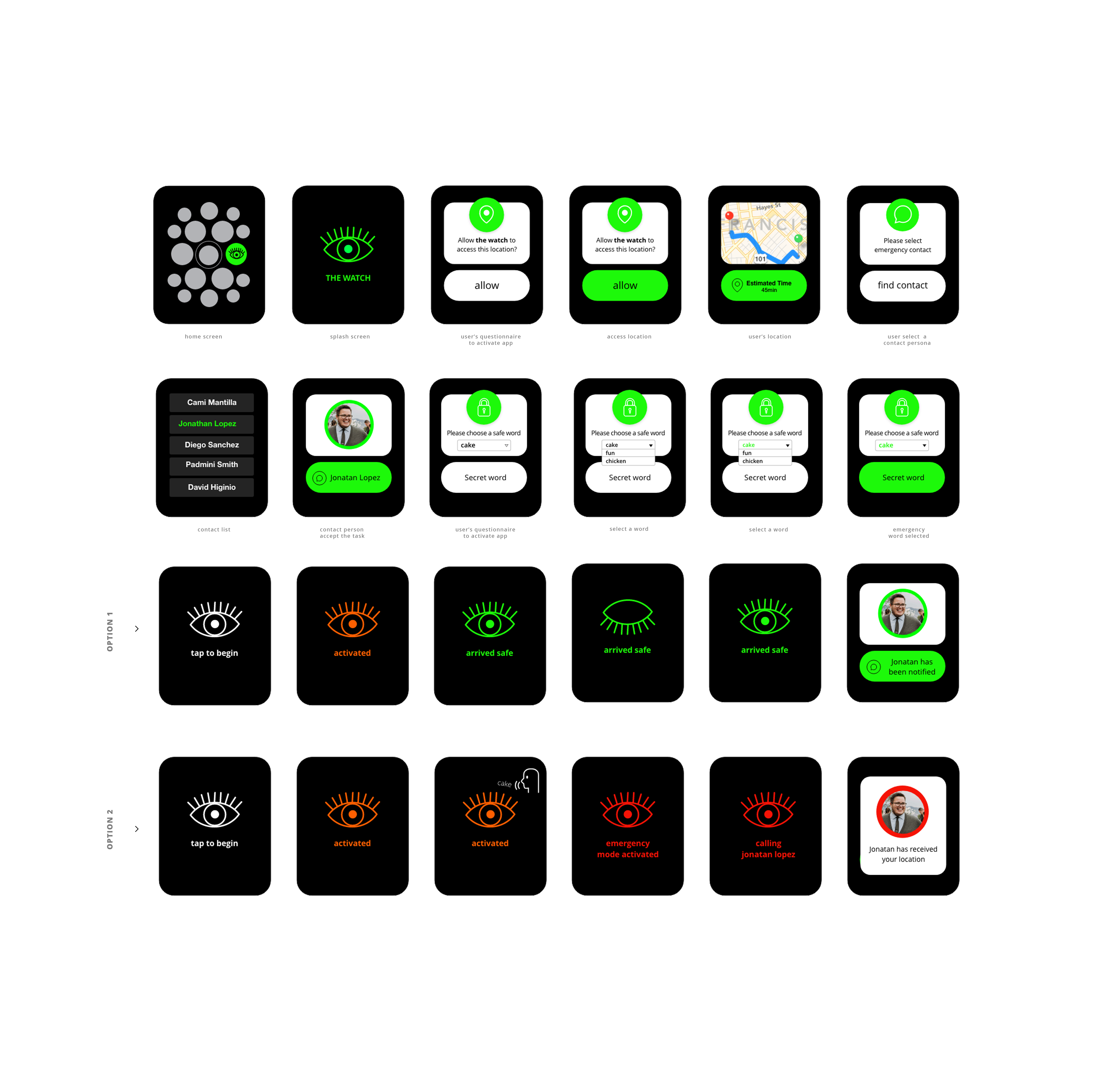First Round Prototype
After getting the feedback from my classmates, here are some of the suggestions I incorporated to create a better user flow
- Reorganization of the flow of the user interface was necessary. As users suggested, I removed the intro in order to jump right away to the main screens.
- Using contact list to choose emergency contact
- Voice activation during last steps could create confusion, so voice command will be only used in case of emergency.
- Use GPS to track the location and path of the user

Second Round Prototype
I designed Low-Fidelity wireframes to visualize the flow and see what steps were missing on paper

